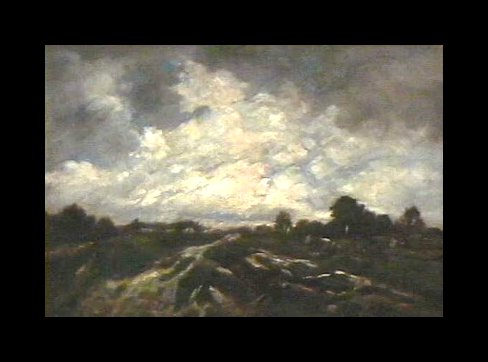Jules Dupre (1811-1889)
Get a Dupre Certificate of Authenticity for your painting (COA) for your Dupre drawing.
For all your Dupre artworks you need a Certificate of Authenticity (COA) in order to sell, to insure or to donate for a tax deduction.
Getting a Dupre Certificate of Authenticity (COA) is easy. Just send us photos and dimensions and tell us what you know about the origin or history of your Dupre painting or drawing.
If you want to sell your Dupre painting or drawing use our selling services. We offer Dupre selling help, selling advice, private treaty sales and full brokerage.
We have been authenticating Dupre and issuing certificates of authenticity since 2002. We are recognized Dupre experts and Dupre certified appraisers. We issue COAs and appraisals for all Dupre artworks.
Our Dupre paintings and drawings authentications are accepted and respected worldwide.
Each COA is backed by in-depth research and analysis authentication reports.
The Dupre certificates of authenticity we issue are based on solid, reliable and fully referenced art investigations, authentication research, analytical work and forensic studies.
We are available to examine your Dupre painting or drawing anywhere in the world.
You will generally receive your certificates of authenticity and authentication report within two weeks. Some complicated cases with difficult to research Dupre paintings or drawings take longer.
Our clients include Dupre collectors, investors, tax authorities, insurance adjusters, appraisers, valuers, auctioneers, Federal agencies and many law firms.
We perform Jules Dupre art authentication, appraisal, certificates of authenticity (COA), analysis, research, scientific tests , full art authentications. We will help you sell your Jules Dupre or we will sell it for you.


Jules Dupre is said to be one of the most outstanding and influential landscapes painters of his generation. He painted many of his landscapes in the romantic style, and was also a member of the Barbizon school. He was well known for his very close friendship with one of the most important exponents of the school, Theodore Rousseau.
He was born in Nantes, where his Father was the owner of a porcelain factory in Parmain. He went to work in his Father’s factory, but in his spare time he painted, and drew. He later on went to Paris to work in the porcelain factory of his uncle. Whilst there, he was to work with another young man, with whom he would meet later on, in the surroundings of the Forest of Fontainebleau. This other young man was Narcisse Virgile de la Pena, little did they know at their young age that they were both destined to become two of the great painters of the Barbizon school.


In his spare time he drew, and painted landscapes. He depicted a number of times the area around Limoge, where his Father moved to, to take up the position of the Director of a porcelain factory. He eventually went to Paris to study with the landscape and animal painter, Jean Michel Diebold. He also spent time in the Louvre copying the masterpieces there.
In 1831, he made his debut at the Salon where he exhibited a number of landscapes. Around this time, he visited London, and he was greatly influenced by Constable’s style of painting. It is said that Jules Dupre was responsible for bringing the English style of landscape paintings to France, and for blending it in with the Barbizon school style of painting. Jules Dupre excelled in portraying landscapes, and nature in a dramatic manner. He was admired by many artists of his time, including Eugene Delacroix, who of course excelled in producing paintings in the romantic, and Orientalist style.
His meeting with Theodore Rousseau, in the surrounding region of the Forest of Fontainebleau was in a sense a defining moment for him. They were to become exceptionally good friends. They worked together, and shared a studio for a number of years. They also spent time traveling across France, painting together. In fact, for some time, their artistic relationship was so close that it is difficult for art historians to discern whether it was Dupre who influenced Rousseau, or the other way around.
However, his friendship with Rousseau became doomed when they had some disagreements. The nature of the disagreements apparently stemmed from some gossip started by the daughter of the writer, George Sands, to whom Rousseau was engaged. Things were never to be the same again, yet in a sense they were bound together in eternity due to the strong influence that they had over each other artistically. In fact the painting entitled, ‘La Vanne,’ which now hangs in the Musee d’Orsay is said to depict perfectly their connection with one another. Another example of his work is the painting entitled, ‘Old Oak,’ which hangs in the National Gallery of Art in Washington.

In the 1860s, he spent much time in Cayeux-sur Mer, where he produced marine and shore line landscapes. In the summer months, Jean Francois Millet joined him there, where he also painted. Jules Dupre also had a brother, named Victor who became a student of his. It is said that both brothers painted landscapes in the same style, but that without a doubt, Dupre’s artistic ability surpassed that of his brother.
If you believe you own a work of art by Jules Dupre, contact Art Certification Experts. We authenticate, appraise, research and provide Certificates of Authenticity (COA's) for works by Jules Dupre.
Reviews
1,217 global ratings
5 Star
4 Star
3 Star
2 Star
1 Star
Your evaluation is very important to us. Thank you.
